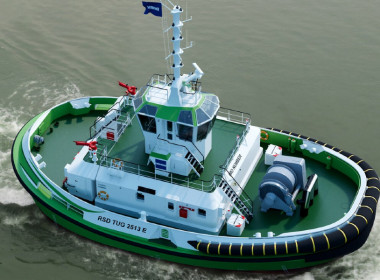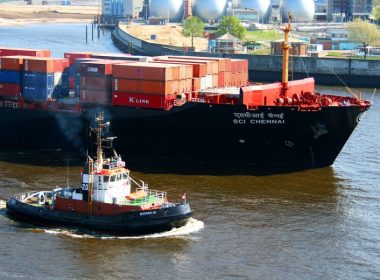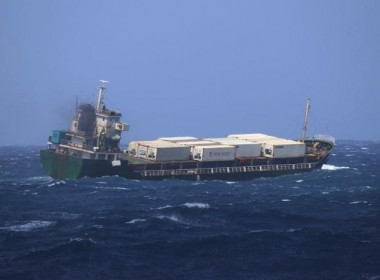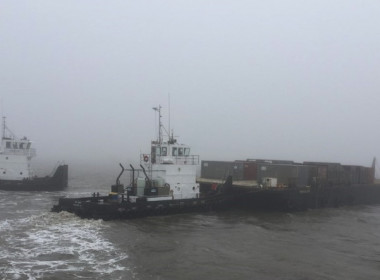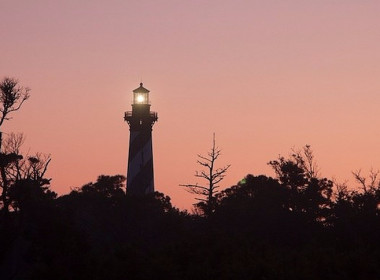COLUMN | First, the good news [Tug Times]

It was heartening to read a recent report about British Columbia’s first all-female tug crew, who are also believed to be the first in the history of SAAM Towage.
Captain Hailey McIntyre and deckhand Ocean Rutherford sailed the tug Apache from Prince Rupert to Stewart, near the Alaskan border – a twelve-hour voyage. Then, after a night in a hotel, they assisted the berthing of a container ship. When cargo work was completed, they unberthed the ship and escorted it out of port before making the twelve-hour voyage back to Prince Rupert.
Photographs that accompanied the article showed two young women with beaming smiles, giving off every impression of loving what they do, so congratulations to both of them.
Sadly, we now turn to the bad news, which I must point out is nothing to do with the young mariners described in the article.
And the bad news is I am horrified such a voyage was undertaken with only two people on board. It is described as a three-day voyage, so presumably the captain was on watch for at least twelve hours on two of those days as there is no indication the deckhand was a qualified watchkeeper.
“I cannot imagine how a two-person crew on a twelve hour passage can be justified under any system that has the word ‘safety’ in its title.”
A recent tool that is intended to help mariners understand their risk of fatigue lists various activities and classifies them as low, medium, or high risk. You can undertake unlimited low risk activities, up to four medium risk activities per day, but no high risk activities at all. Among the high risk activities is “keeping a watch more than six hours long”. So our captain, on this basis, was probably fatigued on at least two of the three days.
I am well aware that if anyone had suggested I could not work long hours when I was that age I would have laughed at them, and I am also aware that research into fatigue on tugs is sadly lacking. I have yet to see anything that tells me if fatigue starts to affect performance immediately, or whether it builds up over an extended period.
What are the effects of three days’ hard work followed by a period for rest and recovery? Nobody seems to know, but it doesn’t really matter – the boffins say it is dangerous, so it is.
The sad thing is that when things go wrong, it won’t be just the managers who are penalised, but probably also the crew, and they certainly don’t deserve to be punished.
But my concerns run deeper than that. I imagine a long passage through cold waters where bad weather is always possible, and I wonder what happens if, God forbid, the deckhand trips on deck and ends up in the water. Is she only permitted on deck wearing a survival suit with a locator beacon? Because I do not know how the captain will ever pick her up without assistance. Come to that, the rescue services might be several hours away, so it seems like a recipe for disaster.
And what does the deckhand do if the captain has an accident and cannot function? In my imagination, there are so many ways things that could go wrong.
Tugs are generally not large enough to require a safety management system, but most reputable tug companies (and SAAM is certainly reputable) have them anyway. I cannot imagine how a two-person crew on a twelve hour passage can be justified under any system that has the word ‘safety’ in its title.
Perhaps I am wrong, and if any reader can justify the practices described above, I will be delighted to hear from them, and will include their explanation in a future column. Until then, I think our tug crews deserve better.
“In our presumably profitable tug companies, it is the people who are out there making the money who are also being treated as second-class citizens.”
Hong Kong remains an excellent place to live and work, and rewards its inhabitants with a good number of public holidays. Our seventeen days off are the result of taking both British and Chinese holidays, and we get more than Australia, Canada, the UK, and the USA. We trail behind the 35 public holidays of Nepal, which may explain why Nepalis are generally smiling, but we do quite well. At least, some of us do.
You see, Hong Kong distinguishes between public holidays and statutory holidays, and the Employment Ordinance only recognises the 13 statutory holidays. Over the years, this has resulted in a system where most managers and office workers give themselves 17 holidays, but make sure their manual workers only get 13. Foreign domestic helpers, naturally, fall into the second category, as do most tug crews and maintenance workers.
The business lobby in Hong Kong is quite powerful, and it has resisted efforts to create a level playing field on the basis that it would cost them money, so we are left with a situation where the hardest workers get the least time off. In our presumably profitable tug companies, it is the people who are out there making the money who are also being treated as second-class citizens.
We like to describe ourselves as “Asia’s World City”, although critics have been quick to change it to “Asia’s Third World City”. They are being unfair, but the public holiday situation probably lends some credence to their views. However, before the BBC picks this up and uses it to claim that our freedoms are being eroded again, I should point out that the present administration inherited the system from the British, so our former colonial masters are to blame.
Hong Kong could claim the moral high ground by extending the 17 public holidays to all workers. It would cost very little, and would enable the administration to point out they care more than the previous rulers did. More importantly, it would be the right thing to do.


